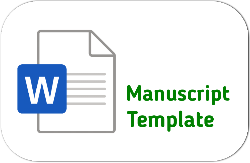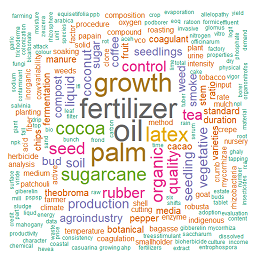Analisis Pertumbuhan Tanaman Tebu (Saccharum officinarum L.) Akibat Aplikasi Vermikompos dan Plant Growth Promoting Rhizobacteria (PGPR)
DOI:
https://doi.org/10.25181/jaip.v9i2.1973Keywords:
cultivation technique, organic matter, soil fertilityAbstract
Sugarcane (Saccharum officinarum L.) play an important role for sugar consumption in Indonesia. Problem found with sugar industry in Indonesia is the low productivity of sugarcane because of cultivation techniques caused by low soil fertility. This research aimed to determine effect of Plant Growth Promoting Rhizobacteria (PGPR) and vermicompost in increasing the growth of sugarcane. The research method used Randomized Block Design (RBD) consisted of 2 factors with a combination of 6 treatments. The first factor was A1 = without PGPR A2 = PGPR (10 ml.L-1) and the second factor was P1 = 3.5 t.ha-1 (50% vermicompost recommended fertilizer), P2 = 7.t ha-1 (100% vermicompost recommended fertilizer) and P3 = 10.5 t.ha-1 (150% vermicompost recommended fertilizer). Variables of this observation are plant height, number of tillers, number of stems, number of internodes, stem diameter, brix value and the yield of sugarcane. At the age 7 months after planting, the treatment of PGPR application at a vermicompost dose of 7 t.ha-1 (78.46 t.ha-1) was able to reduce the need for a vermicompost dose which was shown by a higher yield value compared to without PGPR application with vermicompost 3.5 t.ha-1 and vermicompost dose of 7 t.ha-1. A higher stem weight obtained in the PGPR treatment when compared to the treatment without PGPR. At a vermicompost 7 t.ha-1 and a vermicompost 10.5 t.ha-1 showed a higher stem weight compared to vermicompost 3.5 t.ha-1.Downloads
References
Bhattacharyya, C., Banerjee, S., Acharya, U., Mitra, A., Mallick, I., Haldar, A., Haldar, S., Ghosh, A., & Ghosh, A. (2020). Evaluation of Plant Growth Promotion Properties and Induction of Antioxidative Defense Mechanism by Tea Rhizobacteria of Darjeeling, India. Scientific Reports, 10(1): 15536.
Deng, X., Wu, C., Li, Q., & Li, W. (2017). Effect of Vermicompost on Soil Enzyme Activity of Coastal Saline Soil in Water Spinach Plantation. Proceedings of the 2017 6th International Conference on Energy, Environment and Sustainable Development (ICEESD 2017). 2017 6th International Conference on Energy, Environment and Sustainable Development (ICEESD 2017), Zhuhai, China. Advances in Engineering Research, 129: 419-422.
Kadarwati. (2015). Peningkatan Produksi dan Rendemen Tebu (Sacharrum officinarum) Melalui Rawat Ratoon. Jurnal Littri, 21(4): 199-205.
Kumar, A., Prakash, C. H. B., Brar, N. S., & Kumar, B. (2018). Potential of Vermicompost for Sustainable Crop Production and Soil Health Improvement in Different Cropping Systems. International Journal of Current Microbiology and Applied Sciences, 7(10): 1042–1055.
Moradi, H., Fahramand, M., Sobhkhizi, A., Adibian, M., & Noori, M. (2014). Effect of Vermicompost on Plant Growth and Its Relationship with Soil Properties. International Jurnal of Farming and Allied Science, 3(3): 333-338.
Ningrum. (2014). Efikasi Herbisida Ametrin untuk Mengendalikan Gulma pada Pertanaman Tebu (Saccharum officinarum L.) Lahan Kering. Jurnal Agrotek Tropika, 2(2): 264-269.
Nisaa, A. K., Guritno. B., & Sumarni, T. (2016). Pengaruh Pupuk Hijau Crotalaria mucronata dan C. juncea pada Pertumbuhan dan Hasil Tanaman Kedelai (Glycine max L. Merril). Jurnal Produksi Tanaman, 4(8): 602-610.
Rokhman. (2016). Jumlah Anakan dan Rendemen Enam Klon Tebu (Saccharum officinarum L.) Asal Bibit Bagal, Mata Ruas Tunggal dan Mata Tunas Tunggal. Vegalitika, 3(3): 89-96.
Setiawati, M. R., Sofyan, E. T., Nurbaity, A., Suryatmana, P., & Marihot, G. P. (2018). Pengaruh Aplikasi Pupuk Hayati, Vermikompos dan Pupuk Anorganik Terhadap Kandungan N, Populasi Azotobacter sp. dan Hasil Kedelai Edamame (Glycine max (L.) Merill) pada Inceptisols Jatinangor. Agrologia, 6(1): 1-10.
Singh, S. P., Nigam, A., & Singh, R. K. (2013). Influence of Rind Hardness on Sugarcane Quality. American Journal of Plant Sciences, 4(8): 45–52.
Souza Bastos, A. V., de Oliveira, R. C., da Silva, N. F., Teixeira, M. B., Loureiro Soares, F. A., & da Silva, E. C. (2015). Productivity and Dry Matter Accumulation of Sugarcane Crop under Irrigation and Nitrogen Application at Rio Verde GO, Brazil. American Journal of Plant Sciences, 6(14): 2374–2384.
Stamford, N. P., Neto, D. E., de Freitas, A. D. S., Oliveira, E. C. A., Oliveira, W. S., & Cruz, L. (2015). Rock Biofertilizer and Eartheworm Compost on Sugarcane Performance and Soil Attributes in Two Consecutive Years. Scientia Agricola, 73 (1): 29-33.
Tando, E. (2017). Review: Peningkatan Produktivitas Tebu (Saccarum Officinarum l.) pada Lahan Kering Melalui Pemanfaatan Bahan Organik dan Bahan Pelembab Tanah Sintesis. Biotropika - Journal of Tropical Biology, 5(3): 90–96.
Tena, E., Mekbib, F., & Ayana, A. (2016). Heritability and Correlation among Sugarcane Yield and Some Agronomic and Sugar Quality Traits in Ethiopia. American Journal of Plant Sciences, 7(10): 1453–1477.
Upadhyay, S. K., Singh, D. P., & Saikia, R. (2009). Genetic Diversity of Plant Growth Promoting Rhizobacteria Isolated from Rhizospheric Soil of Wheat Under Saline Condition. Current Microbiology, 59(5): 489–496.
Wang, J., Zhao, T., Yang, B., & Zhang, S. (2017). Sucrose Metabolism and Regulation in Sugarcane. Journal of Plant Physiology & Pathology, 5(4).
Zhang, Y., Sun, C., Chen, Z., Zhang, G., Chen, L., & Wu, Z. (2019). Stoichiometric analyses of soil nutrients and enzymes in a Cambisol soil treated with inorganic fertilizers or manures for 26 years. Geoderma, 353: 382–390.
Downloads
Published
How to Cite
Issue
Section
License
Copyright (c) 2021 Nadya Muliandari, Sudiarso Sudiarso, Titin Sumarni

This work is licensed under a Creative Commons Attribution-ShareAlike 4.0 International License.
Authors who publish with Jurnal Agro Industri Perkebunan agree to the following terms:
Authors retain copyright and grant the Jurnal Agro Industri Perkebunan right of first publication with the work simultaneously licensed under a Creative Commons Attribution License (CC BY-SA 4.0) that allows others to share (copy and redistribute the material in any medium or format) and adapt (remix, transform, and build upon the material for any purpose, even commercially) with an acknowledgment of the work's authorship and initial publication in Jurnal Agro Industri Perkebunan.
Authors are able to enter into separate, additional contractual arrangements for the non-exclusive distribution of the journal's published version of the work (e.g., post it to an institutional repository or publish it in a book), with an acknowledgment of its initial publication in Jurnal Agro Industri Perkebunan. Authors are permitted and encouraged to post their work online (e.g., in institutional repositories or on their website) prior to and during the submission process, as it can lead to productive exchanges, as well as earlier and greater citation of published work.


























